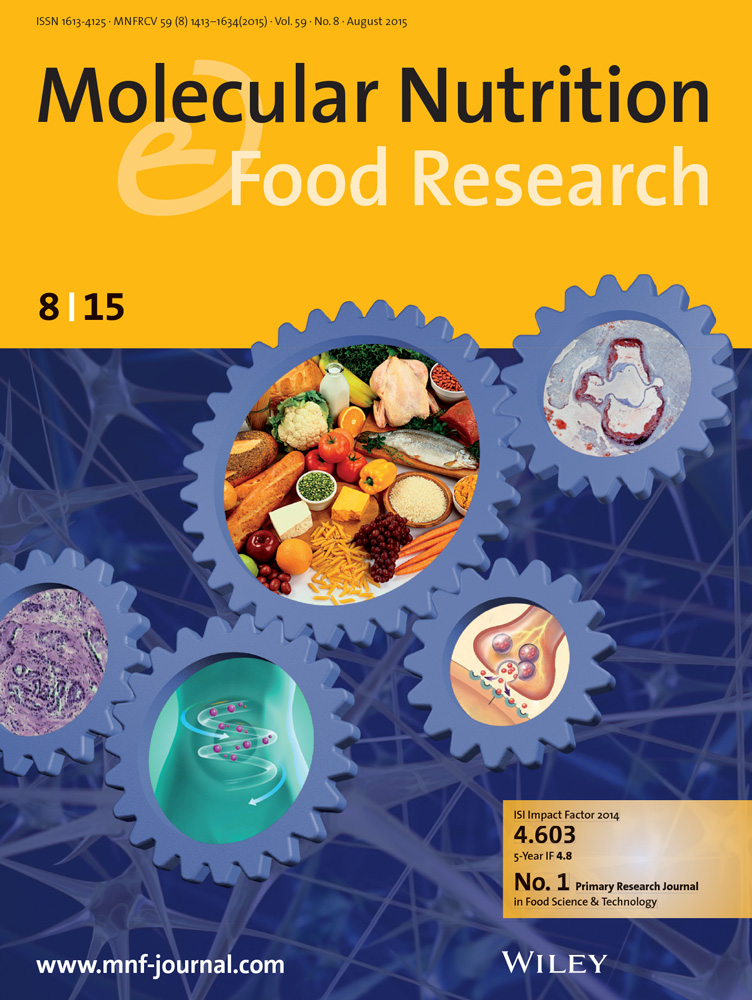Valorization of Prunus cerasus var. Marasca Pomace Derived From Industrial Processing: Recovery, Characterization, and Bioactivity Assessment of Secondary Metabolites
IF 4.5
2区 农林科学
Q1 FOOD SCIENCE & TECHNOLOGY
引用次数: 0
Abstract
The phytochemical composition of Prunus cerasus var. marasca pomace produced as industrial byproduct was investigated. Its antioxidant and anti-tyrosinase properties were also assessed to evaluate a possible reuse as a bioactive food ingredient. Secondary metabolites were extracted from pomace using an optimized ultrasound-assisted maceration in ethanol/water. Total phenols (26.2 mg GAE/g), flavonoids (2.5 mg RE/g), and anthocyanins (82.5 µg CE/g) in the extract were determined spectrophotometrically. Seventy metabolites were identified by UHPLC-QToF-MS, and several are here reported in marasca cherries for the first time. The extract exerts valuable free-radical scavenging, metal-reducing, and metal-chelating activities that underlie its antioxidant properties. Also, it inhibits tyrosinase with an effect equaling 39 mg kojic acid/g of extract. However, temperatures >4°C during 6-month storage significantly affected the phenolic content and bioactivity of extract. Pomace of P. cerasus var. marasca cherries can be reused as a source of bioactive secondary metabolites, which can be easily recovered by sustainable ultrasound-assisted maceration. The extract can potentially be used as an additive to increase the oxidative stability of food products and control enzymatic browning, and improve their nutraceutical properties. However, storage time and temperature should be carefully evaluated in order to preserve extract's properties. Alternatively, appropriate stabilization strategies need to be developed further.

从工业加工中提取的樱桃果渣的价值:次生代谢产物的回收、特性和生物活性评价
对工业副产物樱桃渣的植物化学成分进行了研究。还对其抗氧化和抗酪氨酸酶性能进行了评估,以评估其作为生物活性食品成分的再利用可能性。利用优化后的超声辅助乙醇/水浸渍法从渣滓中提取次生代谢物。分光光度法测定提取物中总酚(26.2 mg GAE/g)、总黄酮(2.5 mg RE/g)和花青素(82.5µg CE/g)含量。用UHPLC-QToF-MS鉴定了70种代谢物,其中有几种是首次在黑樱桃中报道的。提取物具有清除自由基、金属还原和金属螯合活性,这是其抗氧化特性的基础。同时,对酪氨酸酶的抑制作用相当于39毫克曲酸/克提取物。然而,在6个月的储存过程中,温度(4℃)对提取物的酚类含量和生物活性有显著影响。樱桃果渣可作为具有生物活性的次生代谢物的来源,通过超声辅助浸渍可以很容易地回收。该提取物可作为添加剂用于提高食品的氧化稳定性和控制酶促褐变,并改善其营养保健性能。然而,保存时间和温度应仔细评估,以保持提取物的性质。或者,需要进一步制定适当的稳定战略。
本文章由计算机程序翻译,如有差异,请以英文原文为准。
求助全文
约1分钟内获得全文
求助全文
来源期刊

Molecular Nutrition & Food Research
工程技术-食品科技
CiteScore
8.70
自引率
1.90%
发文量
250
审稿时长
1.7 months
期刊介绍:
Molecular Nutrition & Food Research is a primary research journal devoted to health, safety and all aspects of molecular nutrition such as nutritional biochemistry, nutrigenomics and metabolomics aiming to link the information arising from related disciplines:
Bioactivity: Nutritional and medical effects of food constituents including bioavailability and kinetics.
Immunology: Understanding the interactions of food and the immune system.
Microbiology: Food spoilage, food pathogens, chemical and physical approaches of fermented foods and novel microbial processes.
Chemistry: Isolation and analysis of bioactive food ingredients while considering environmental aspects.
 求助内容:
求助内容: 应助结果提醒方式:
应助结果提醒方式:


